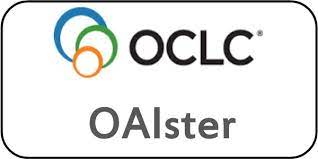Comparison of Myoinositol and Metformin in Women with Polycystic Ovarian Syndrome
Keywords:
Polycystic ovarian syndrome, myoinositol, metformin,, fasting insulinAbstract
Objective: The aim of the study was to compare the effects of 16-week treatment with two insulin-lowering therapies on
the clinical, endocrine-metabolic and ovulatory parameters in women affected by polycystic ovarian syndrome (PCOS).
Material and methods: A total of 70 patients attending the Gynecology OPD of Holy Family Hospital, Okhla, New Delhi,
with clinical features of PCOS in the age group of 17-35 years, between June 2015 and May 2016, were selected. Patients were
randomly distributed into two groups with 35 patients each. Group 1 received myoinositol (MYO) 2 g/day, while Group 2
received metformin 500 mg/day twice-daily. Baseline anthropometry, biochemical investigations and pelvic ultrasonography
were done and repeated after 16 weeks. Results: Modified Ferriman-Gallwey (mFG) score was reduced from 4.66 ± 4.06 SD
to 3.56 ± 3.29 SD in Group 1 and 4.94 ± 4.05 SD to 3.87 ± 3.24 SD in Group 2; the fall in Group 1 was more significant than
Group 2. Fasting insulin decreased from 13.90 ± 6.88 SD to 11.66 ± 6.05 SD in Group 1 and from 12.85 ± 4.46 SD to 11.78 ± 4.39
SD in Group 2; reduction was highly significant in Group 1 than Group 2. Results for luteinizing hormone (LH) were not
significant. Free testosterone decreased from mean of 1.47 ± 0.37 SD to 1.37 ± 0.37 SD in Group 1 and from 1.43 ± 0.37 SD
to 1.36 ± 0.36 SD in Group 2; the fall in Group 1 was more significant than Group 2. Conclusion: Metformin is effective in
reducing the metabolic and hormonal parameters and improves fertility. MYO not only improves all the above parameters
but also decreases insulin resistance significantly. Thus, MYO supplementation is essential in the management of PCOS to
improve insulin sensitivity.
Downloads
Published
Issue
Section
License
All open access articles published in IJCP are distributed under the terms of the CC BY-NC 4.0 license (Creative Commons Attribution-Non-Commercial 4.0 International Public License). This license permits unrestricted use, distribution, and reproduction of the articles in any medium for non-commercial purposes, provided that: The original authorship is properly and fully attributed. The IJCP is cited as the original place of publication with correct citation details. If an original work is reproduced or disseminated in part or as a derivative work, this must be clearly indicated. No articles are reproduced for commercial use without prior consent from the IJCP. All licensing requests and permissions for commercial use will be managed by the Publisher.










